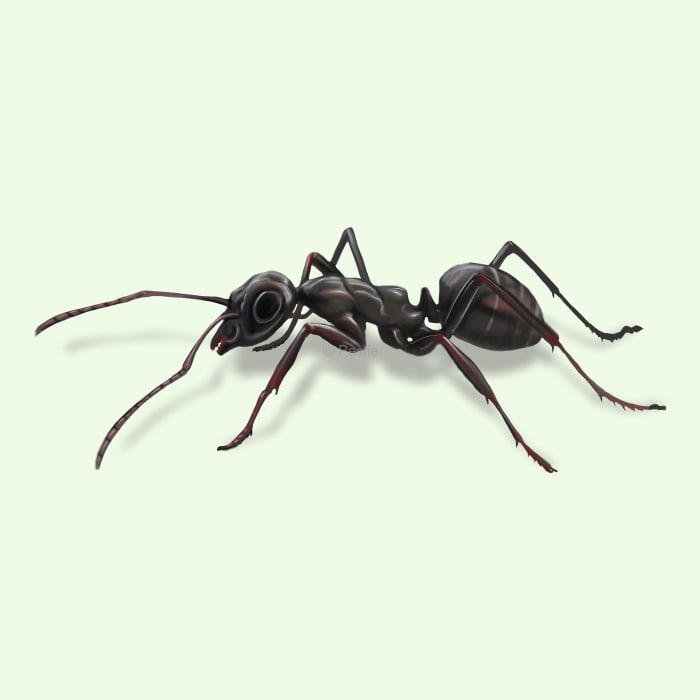How to identify and get rid of pavement ants

Where the sidewalk ends, the pavement ants start
Do you remember seeing ant mounds on the sidewalks as a kid and watching the long line of ants marching off to find their next meal? As a homeowner, watching the ants march inside your kitchen may be less exciting.
Pavement ants are common across many U.S. households, nestling into cracks and crevices of sidewalks, driveways, and inside homes. Despite their invasive nature, these ants are relatively harmless and are more of a nuisance than a threat.
In the spring or summer, you may see swarms of winged ants flying around your property. New queens go on these mating flights with males, shed their wings, and start making new nests. Pavement ants make little mounds of sand around the entrance of their nests.
Since they prefer to nest around places with little vegetation, concrete slabs near homes and garages are the perfect location. While they won’t make their nests inside your home, that doesn’t mean they won’t make a stop in your pantry looking for sugary treats. There’s a reason their nickname is sugar ants!
How to identify pavement ants
Pavement ants are small, dark brown ants that can be easily identified if you look closely enough. Their head and thorax have long, thin, parallel grooves, and two small spines are at the end of the thorax. Additionally, their narrow waist, called a petiole, has two bumps or nodes.
You might suspect an infestation if they see small piles of displaced soil or sand between cracks in driveways, sidewalks, or near your building’s foundation. These ants are also attracted to sweets, proteins, and greasy foods, often leading them to venture indoors.
How big are pavement ants?
Pavement ants typically grow to about 1/8 inch long.
What other pest looks like a pavement ant?
Pavement ants can be confused with odorous house ants, which are also small and dark-colored but emit a rotten coconut smell when crushed.
Where do pavement ants live?
These ants are found throughout the Eastern and Midwest regions of the U.S. and in some parts of California and Washington.
How to get rid of pavement ants
Seal up any small cracks, holes, or gaps around the house to keep pavement ants out. You’ll also want to clean up any spills or dropped food, especially sweet foods or sugary drinks.
If you already have ants invading the house, you can deploy ant baits to get rid of them. Baits with slow-acting pesticides won’t immediately kill the workers, allowing them to return the bait to the colony. This will kill the queen, ensuring more workers aren’t sent out to forage for food in your pantry.
Place the bait stations in areas where you’ve seen ants and keep them out of reach of pets or children.
Additionally, removing sources of moisture can help reduce ant activity around your property.
Keep ants out for good with a pest control plan by Pestie. Pestie offers a pro-grade DIY solution that only takes a few minutes to apply. Now, you can get professional protection for a fraction of the price.
Treat pavement ants with Pestie
If you're still having trouble keeping pavement ants away, the best option is to use a pro-grade, effective pest control solution like Pestie.
Pestie is a do-it-yourself pest control solution that's specially designed to keep pavement ants and other pests away from your home.
With Pestie, you can rest easy knowing that your living space is protected and free of creepy crawlies. And the best part? It's designed for people, pets, and the planet, so you can say goodbye to harsh chemicals and hello to peace of mind!
- Save hundreds compared to traditional annual pest plans
- People, pet, and planet-friendly
- Pro-grade customized formulas
Quick facts
- Scientific name
Tetramorium Immigrans Santschi
- Colors
Dark brown to black
- Life span
1-3 months, though the queen can live for several years
- Diet
Sweets, grease, dead insects
How dangerous are Pavement Ants?
Low danger risk
Pavement ants are not harmful to humans and pose no medical significance.
Pavement ants aren’t native to the U.S. It was believed that they hitched a ride on a traveling ship from Europe back in the 1700s to 1800s. It is believed that just a single colony was transported over and eventually spread across the Eastern half of the U.S.








